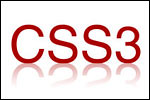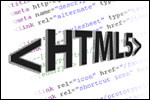 Inline-block and float seems to be alike at first sight. What is more, both these statements can be used to accomplish the same visual effect. You can use them both to create a whole range of other commonly used web patterns. Let’s try to find the differences that help you to make the right choice.
Inline-block and float seems to be alike at first sight. What is more, both these statements can be used to accomplish the same visual effect. You can use them both to create a whole range of other commonly used web patterns. Let’s try to find the differences that help you to make the right choice.
Continue Reading...
Previous post
 The IE team provides some standartistas that should make our life easier as well s to avoid such problems in next IE releases. A new meta tag with the browser version the site was built for was introduced. It is a perfect solution for the IE team to make sure that if we render our documents in a specific version, these documents won’t break ever again.
The IE team provides some standartistas that should make our life easier as well s to avoid such problems in next IE releases. A new meta tag with the browser version the site was built for was introduced. It is a perfect solution for the IE team to make sure that if we render our documents in a specific version, these documents won’t break ever again.
Continue Reading...
Next post
Previous post
 Nothing is perfect in this world and CSS3 with its background color gradient proves this rule one more time. It is not for shortening CSS code, but only for making it more variable. We all suppose that with CSS the necessary colours can simply defined while the browsers do all the drawing. Sounds great, but don’t work in practice… at least as you expected.
Nothing is perfect in this world and CSS3 with its background color gradient proves this rule one more time. It is not for shortening CSS code, but only for making it more variable. We all suppose that with CSS the necessary colours can simply defined while the browsers do all the drawing. Sounds great, but don’t work in practice… at least as you expected.
Continue Reading...
Next post
Previous post
 HTML5 offers another update that should help you to nest every element inside a link tag. On other words, block level links should solve the problem of linking bigger areas constructed from divs, headings and/or other block level elements. However, it is just theory. So, let’s check it in practice.
HTML5 offers another update that should help you to nest every element inside a link tag. On other words, block level links should solve the problem of linking bigger areas constructed from divs, headings and/or other block level elements. However, it is just theory. So, let’s check it in practice.
Continue Reading...
Next post
Previous post
 Suppose it is unnecessary to explain in details the specifics of the inline-block display value. The main problem with it is that it has no support in older browser versions. IE6 and IE7 have partial support only while FF2 has –moz specific support. Let’s try to use the following to fix the problem…
Suppose it is unnecessary to explain in details the specifics of the inline-block display value. The main problem with it is that it has no support in older browser versions. IE6 and IE7 have partial support only while FF2 has –moz specific support. Let’s try to use the following to fix the problem…
Continue Reading...
Next post
Previous post
 Many web developers still use HTML as the best way for constructing to add CSS, javascript and some other enhancements to their web documents. However, more and more people start talking about semantic value of HTML. Sometimes, we take the advice too literary and this may lead to various unnecessary problems with HTML.
Many web developers still use HTML as the best way for constructing to add CSS, javascript and some other enhancements to their web documents. However, more and more people start talking about semantic value of HTML. Sometimes, we take the advice too literary and this may lead to various unnecessary problems with HTML.
Continue Reading...
Next post
Previous post
 Talking about HTML we usually highlight its structural function. However, this time we are going to discuss semantics especially the reasons why it doesn’t provide us with all the advantages promised. The truth is that we spend so much time and effort on writing structurally and semantically valuable html not for screenreader users only.
Talking about HTML we usually highlight its structural function. However, this time we are going to discuss semantics especially the reasons why it doesn’t provide us with all the advantages promised. The truth is that we spend so much time and effort on writing structurally and semantically valuable html not for screenreader users only.
Continue Reading...
Next post
Previous post
 Some web developers use extra wrapper with a background image over empty elements every time they are trying to create triangle. There are several techniques to create triangles in CSS and here are some of them to try. Using the following tips you will take advantage of a browser drawing the borders at angles.
Some web developers use extra wrapper with a background image over empty elements every time they are trying to create triangle. There are several techniques to create triangles in CSS and here are some of them to try. Using the following tips you will take advantage of a browser drawing the borders at angles.
Continue Reading...
Next post
Previous post
 Sometimes even a simple issue can become a real problem with CSS. The main thing is to make it cross-browser. One of such examples is spreading a list evenly across the total width of the container. Let’s try to solve this step by step. Note that any improvements are welcome.
Sometimes even a simple issue can become a real problem with CSS. The main thing is to make it cross-browser. One of such examples is spreading a list evenly across the total width of the container. Let’s try to solve this step by step. Note that any improvements are welcome.
Continue Reading...
Next post
Previous post
 HTML is all about structure and meaning. It allows you to publish content on the web, describe and structure that content. While CSS and Javascript are additions for certain clients, HTML adds meaning and context to the elements of a web document. We try to define the content with html tags so that it will be readable for machines as well as for humans.
HTML is all about structure and meaning. It allows you to publish content on the web, describe and structure that content. While CSS and Javascript are additions for certain clients, HTML adds meaning and context to the elements of a web document. We try to define the content with html tags so that it will be readable for machines as well as for humans.
Continue Reading...
Next post
Previous post
 Inline-block and float seems to be alike at first sight. What is more, both these statements can be used to accomplish the same visual effect. You can use them both to create a whole range of other commonly used web patterns. Let’s try to find the differences that help you to make the right choice.
Inline-block and float seems to be alike at first sight. What is more, both these statements can be used to accomplish the same visual effect. You can use them both to create a whole range of other commonly used web patterns. Let’s try to find the differences that help you to make the right choice. 







